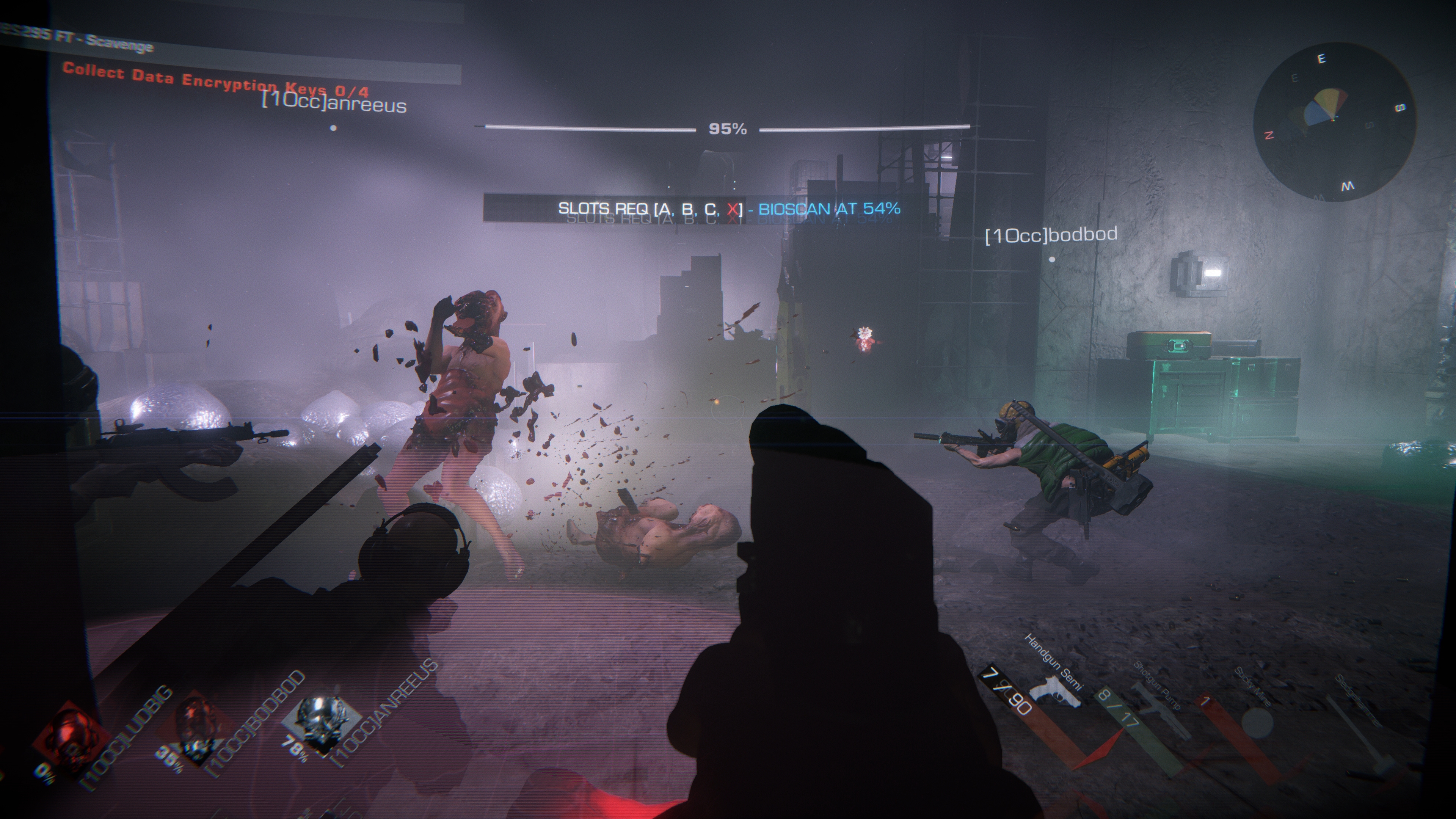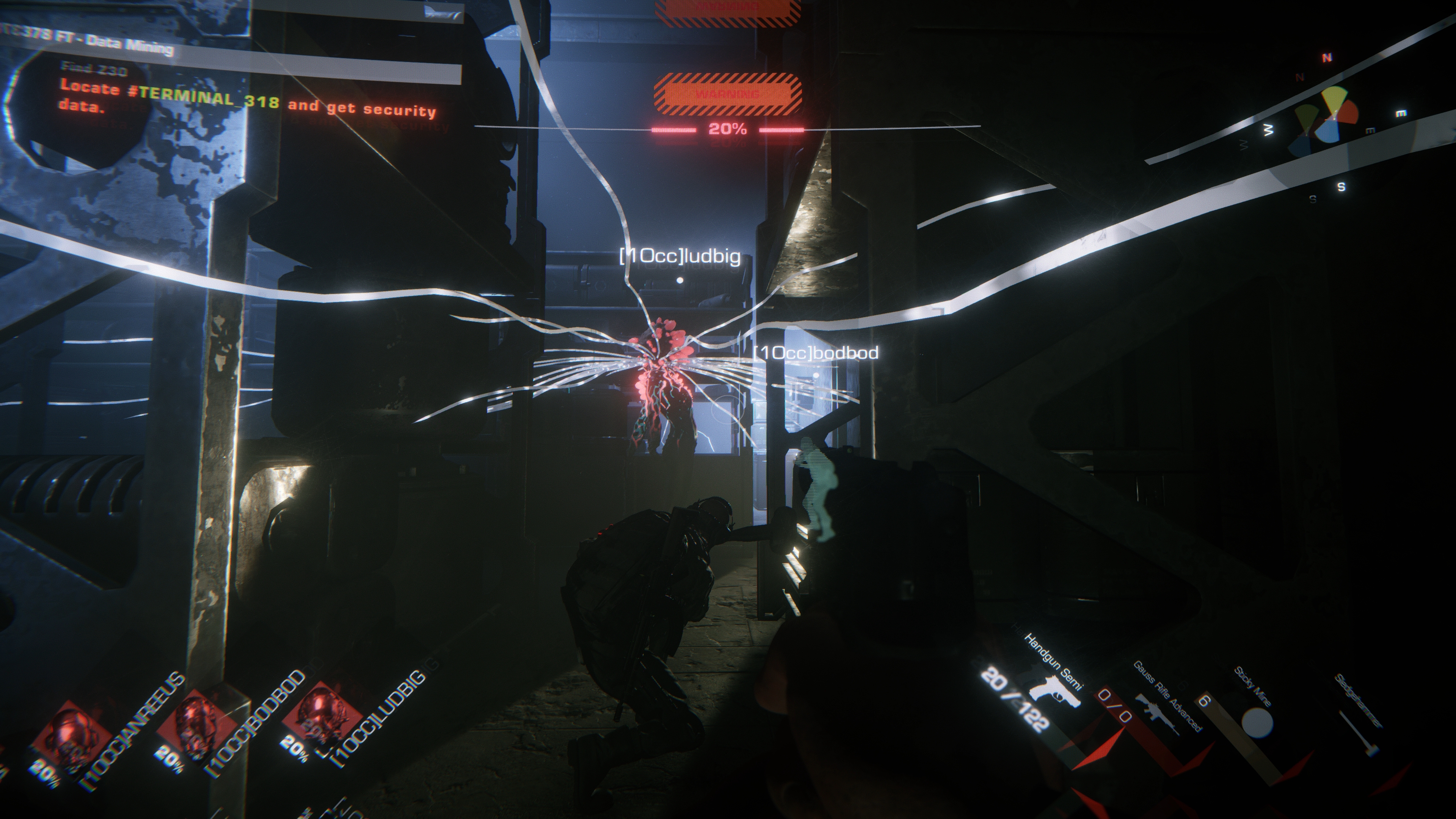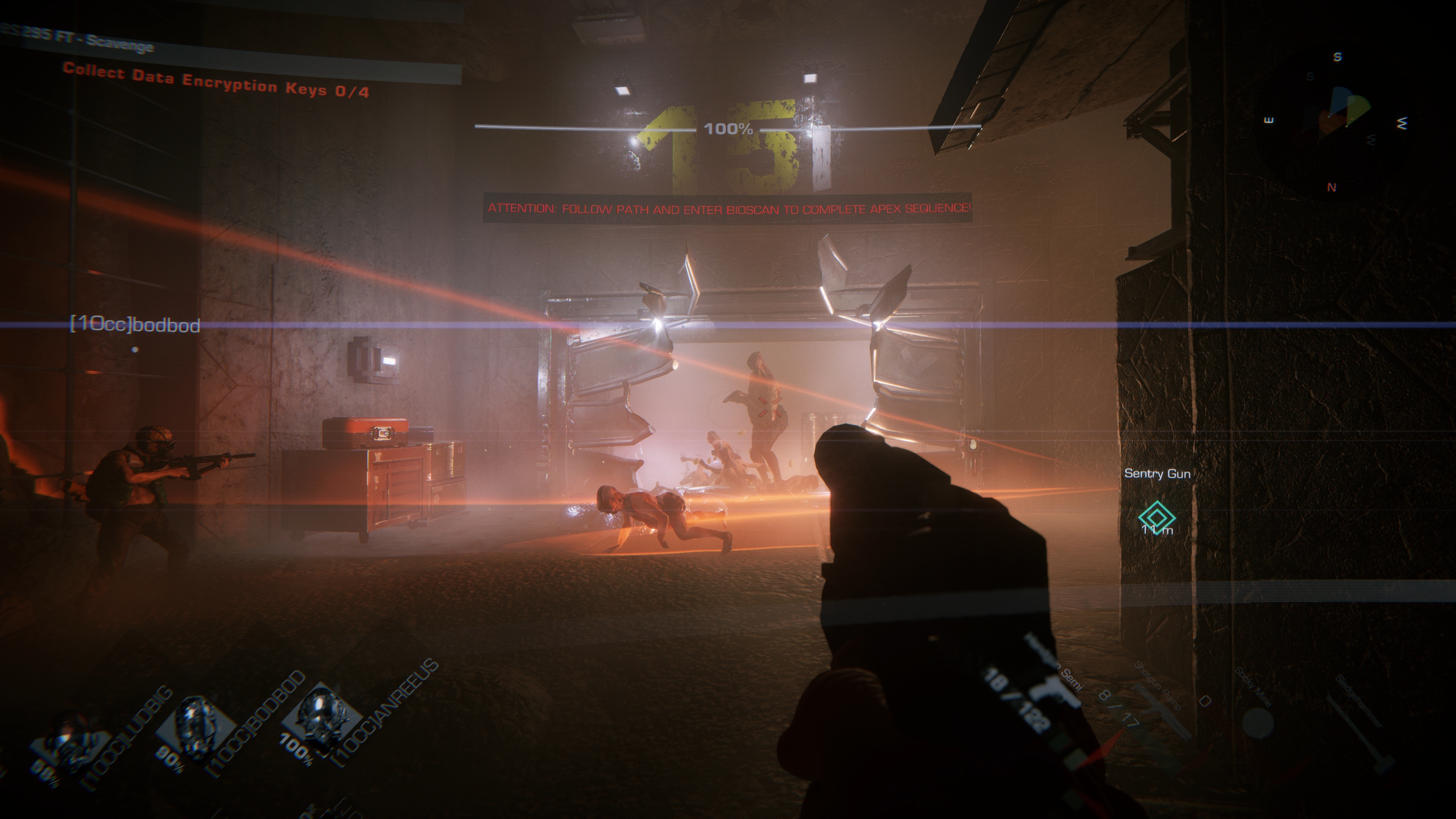You need teamwork, stealth, and steady nerves to survive co-op horror FPS GTFO
Keep quiet. Work together. Have a plan. Don't panic. And maybe you'll live.
For an hour at E3 today I got my hands on GTFO and descended into a spooky and unforgiving network of caverns filled with horrifying fleshy ghouls. I wasn't alone down there, thankfully: three developers from 10 Chambers Collective escorted me into their four-player co-op horror FPS. I'm also gonna throw the world 'stealth' in there among the other adjectives. Though the footage above shows lots of action, most of our time in GTFO was spent sneaking, skulking, keeping quiet, and trying to figure out the best way to progress. You have to do that in GTFO or you won't last long.
(Note: the footage is not of my gameplay session, but was provided by the developer.)
You begin GTFO by choosing your loadout, and that's not just limited to weapons like shotguns, pistols, rifles, and revolvers, but other types of tools to help you stay alive. There's a scanner that can help you map the tunnels ahead and a motion detector that briefly fills the air with green particles if it senses no movement and red particles when it does. There's also a placeable gun turret for defending areas from enemies, and even a glue gun for setting sticky traps. Is this the combination of tools you'll need for the mission ahead? You won't know for sure until you're down there.

On the mission I play, we're being sent into the caves to retrieve a decontamination unit. We're not told why, or who sent us: according to the developers, these mysteries are discovered slowly while you play by gathering clues and other information that (eventually) help explain them.
The depths of GTFO are to be approached slowly and cautiously, with careful coordination between your team members. It's not a game for bursting boldly into unexplored chambers spraying bullets wildly: there simply aren't enough bullets for that. Ammo is scarce even from the start, and each area should be carefully combed for every last ammo pack and medkit, and then shared among the team depending on who needs it most.
If you proceed carefully, you can often catch creatures unaware in GFTO, as many of them are asleep in the dark levels. Creeping over to them and bashing them with a charged-up melee strike is a good tactic, if you've got the nerve. (While sleeping, these fleshy abominations tend to abruptly twitch, making you think they've awoken.) One rather alarming monster can't see you, but extends long creepy white feelers out from its head. Often upon opening a door we'd be greeted by these advancing tendrils, reaching out to feel if someone was there. If a tendril touches someone, and they often did, even as we tried to backtrack away or slip behind cover, the white tendrils would turn blood red and all hell would break loose.

Combat can be sudden and harrowing. When the creatures detect you they howl and screech, and then they come springing out of the gloom, usually in packs. This can result in panicky gunfire (from me, at least), which is a real problem because not only is ammo severely limited, but oh yeah, friendly fire is definitely a thing. Whirling around in the dark with humanoid monsters springing at you it can be easy (very easy!) to pump a few errant bullets into the backs of your teammates. Again, I am speaking mostly of myself here.
The biggest gaming news, reviews and hardware deals
Keep up to date with the most important stories and the best deals, as picked by the PC Gamer team.
Monsters aren't the only obstacle in your path. There are puzzles, too. Locked doors can be opened and locked containers can be hacked, but this requires the same teamwork as taking out a nest of ghouls. For instance, one member of the team may hack a console and retrieve a code, which can be relayed to another member of the team to enter into a computer terminal elsewhere in the level. The communal puzzle solving gives you another reason to communicate constantly with your co-op buddies, and makes working together fun in ways that go beyond gunning down monsters or sharing resources.
And I love the computer terminals in GTFO, because they really work like computers. You have to actually type text and code into them to get them to work. (You can even type 'help' for a list of commands.) If you're using a terminal and a co-op partner is looking over your shoulder at the screen, they can see what you're typing. It's a lovely little detail that makes the environment feel realistic.

By the time we'd neared the end of the level, we were in bad shape. Everyone was hurt from repeated monster encounters, and we were out of medkits (there's no auto-healing, though you can revive downed allies). Most of our ammo was gone, two of us were reduced to using only melee weapons, and one member of the team couldn't fight at all because he was physically carrying the decontamination unit we'd been sent down to acquire, which was bulky and required both his hands to lift. The next batch of monsters finished us off quickly, our mysterious mission failed.
If your team is completely wiped out on a mission in GTFO, there's no respawning from a checkpoint: you simply have to start over from the beginning. I suspect this is a feature I'd eventually find frustrating, but it actually makes good sense for GTFO, a game where each expedition, even if it fails, teaches you something about the level. What combination of weapons and tools would have saved us? Now that we know the layout, should we skip bringing the mapping device and instead double up on auto turrets? Since there were so many close-quarter fights, would shotguns be a better choice for a secondary weapon?
I had a great time with the level of GTFO I played: it's a tense and creepy horror shooter that blends long periods of tense exploration and stealth with sudden freak-out bursts of chaotic gunplay when that stealth doesn't go quite right. GTFO is due out later this year.

Chris started playing PC games in the 1980s, started writing about them in the early 2000s, and (finally) started getting paid to write about them in the late 2000s. Following a few years as a regular freelancer, PC Gamer hired him in 2014, probably so he'd stop emailing them asking for more work. Chris has a love-hate relationship with survival games and an unhealthy fascination with the inner lives of NPCs. He's also a fan of offbeat simulation games, mods, and ignoring storylines in RPGs so he can make up his own.

